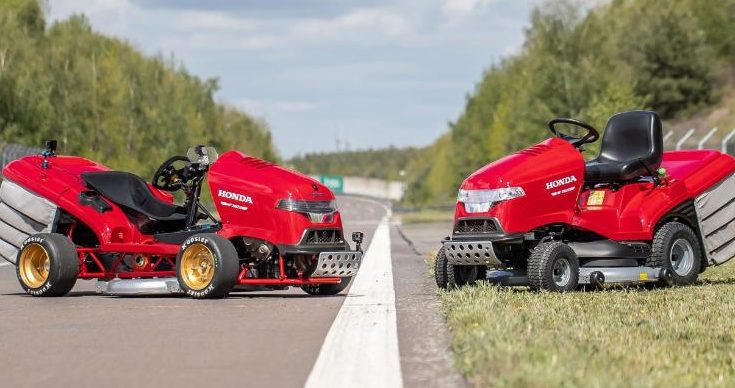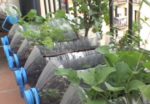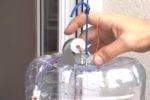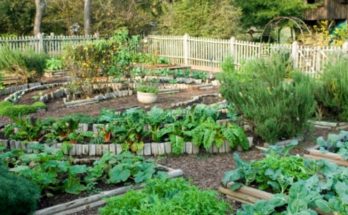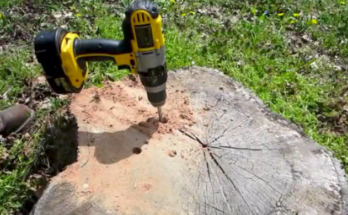Race cars have always caught a lot of attention. But what about race lawnmowers? It seems almost like that’s where we’re headed when we have lawnmowers that can easily do highway speeds!
This is the Mean Mower V2, and has been entered in the Guiness World Records book for the world’s fastest lawnmower (there has been some competition for Honda recently in the fastest lawnmower category). It goes from 0 to 100 miles per hour in 6 seconds. Want to do your yard work faster?
Besides its speed advantage, it can also mow lawns like you’d expect it to. It’s not just for show. A stunt driver recently got it to 100 miles on a racetrack. What kind of power is required for this in a yard work machine? Do you know of Honda’s Fireblade superbike which can go 150 mph? It has a 200 horsepower Honda engine. Guess what? So does this lawnmower.
A Self-Watering Garden
Gardens can water themselves. Who knew? Sound too good to be true? Keep reading and see just how inexpensive and easy this method is for growing all your favorite veggies. Though the garden takes some work to set up, once that’s done it’s basically hands-free and you’ll only need to weed and pick produce. One of the many benefits to having a self-watering garden is that no matter the weather, the plants will get watered, even if you go on vacation and forget to have someone drop by for a watering session, even if it’s over 100 degrees outside and you don’t want to risk heat stroke but worry about losing your crops, and even if you have an emergency and have to leave in a hurry before the day’s watering normally takes place.
Another additional perk is that for a lot of the DIY self-watering gardens, they’re built so that not only will water be constantly accessible to your fruits and vegetables, they will be out of reach from pesky critters who want to partake of your food. This is especially helpful if you’re in an area that has a lot of small wildlife, such as squirrels, rabbits, voles, birds, and deer, or even have pets or farm animals nearby. The enclosures will prevent digging from neighborhood cats and dogs, as well preventing curious goats, cows, sheep, and rabbits from sampling your produce.
My dad is looking to move to a place where he can have a small vegetable garden (we had a couple gardens while I was growing up, and I loved being able to pick a cucumber, some carrots, or broccoli for dinner), but since he’s getting older he’ll need some special containers so that he doesn’t hurt his back or knees. That’s an added bonus to the self-watering garden, since most of the containers (even storebought) can be raised to prevent strained muscles. Since the raised containers or beds also have whatever soil you choose in them, weeding will be a shorter task, another benefit for those who would like the addition of fresh veggies to their table but aren’t always able to spend a lot of time gardening.
If you’re into recycling instead of purchasing all the equipment for the project, you can utilize everything from soda bottles to large juice containers to plastic buckets. They may not look as pretty (although you can of course surround them with brick, stone, or wood), but they do help the environment and will still do a great job at providing nourishment for the plants (while not taking up space in the local landfill). If you’d rather purchase something made for this type of job, however, there are quite a few options.
If you want to check out how to make your own self-watering garden for this spring and summer, you can check out these two videos on YouTube, or these tutorials from The Family Handy Man, Balcony Garden Web, Tree Hugger, or Sustainability by Nature. Happy planting!
1,200,000 Litre Backyard Pool
How about a huge outdoor pool? How big? Oh, let’s say 90 by 70 feet, and with the center that’s around 14 feet deep when it’s full. This giant backyard swimming pool was made using some heavy machinery belonging to neighbors of the owner, namely a back ho and a small caterpillar, as well as some manpower, on the farmstead of Jerry and Marina Lusinc.
Although in the photo you see the pool with a liner, it was originally built without a liner at all, and they used it for a while with just a clay-soil base. However, organic material and life turned their attention toward a cleaner way of doing things. Weeds!
So they put a big 30 mil poly liner down. The liner is just over an inch thick. Can you imagine the weight? It comes in a big roll, so it took 15 people to get it into place and hold the ends up on the bank while putting heavy rocks in place to hold the poly there. The rocks aren’t only useful, though, they also look good, giving it a more natural feel. They also built wood decking around parts of the pool
So what about water quality? Everyone knows that algae loves standing water. In this pool, they use a combination of chlorine and algicide. They also clean it once in a while using a suction pump and sort of ‘vacuuming’ the bottom of the pool. For chlorine, they use both powdered (sprinkled on top, which partially kills the top algae while some sinks down killing organic life deeper inside the pool) and bottled chlorine. For the bottles, they string a bunch of plastic bottles out on a line – the line is tied to two ends of the pool – and they have tiny holes in the bottles, allowing a constant slow drip to control algae.
They also use solar power aeration to keep things clean, running it around 8 to 10 times per day (appropriate for the size of the pool) for 30 minutes per time. This also circulates water, and can be hooked up to a suction which they use to collect things from the bottom to keep it cleaner.
